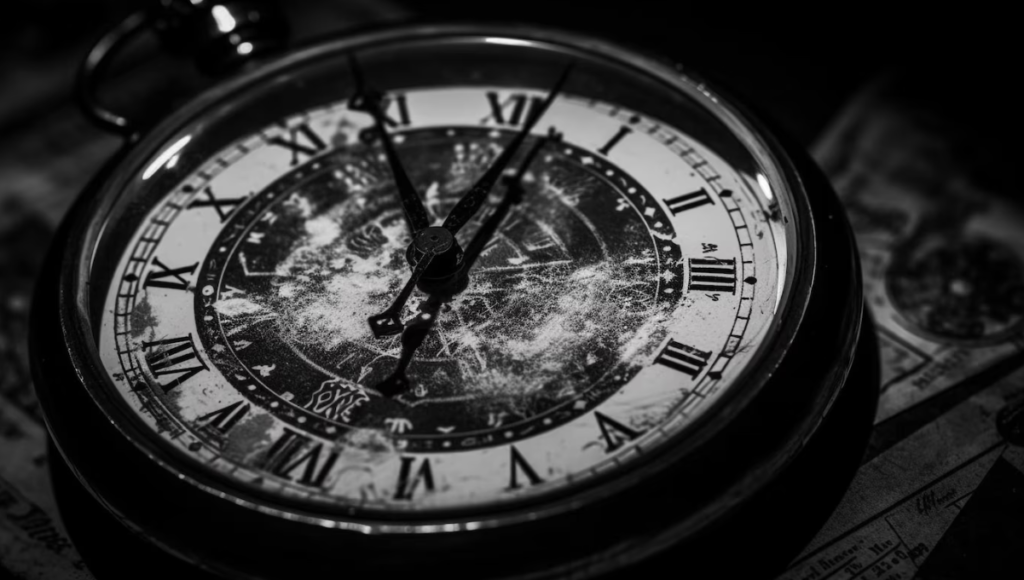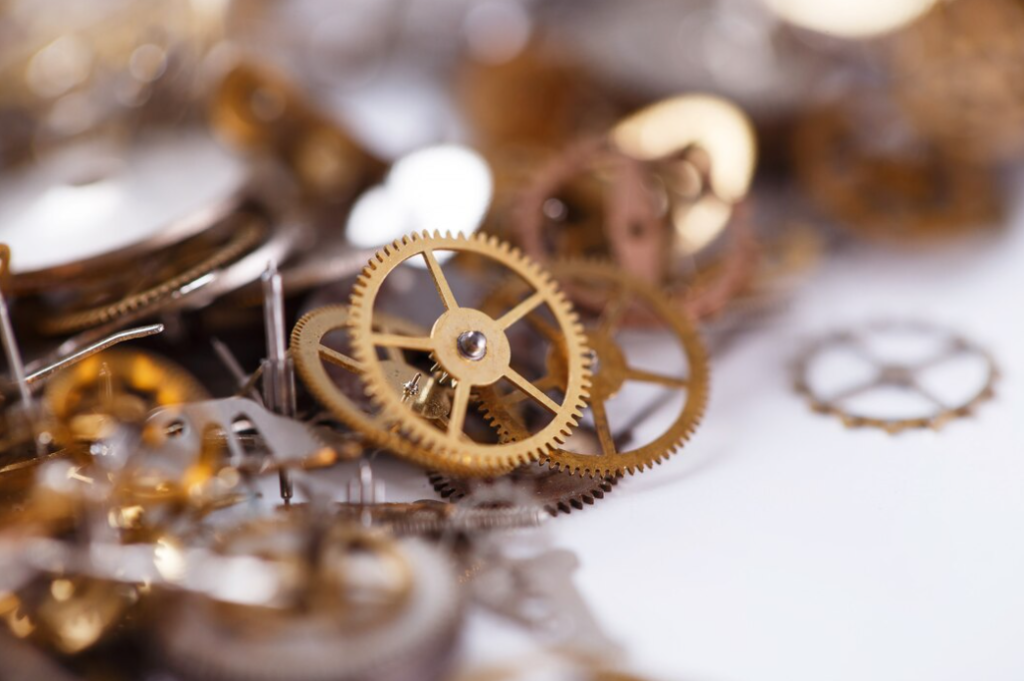The concept of timekeeping is deeply ingrained in our daily lives, and the clock is one of the most iconic inventions in human history. But who invented the clock? This question leads us on a fascinating journey through the annals of time. In this article, we will explore the evolution of timekeeping devices, delve into the contributions of historical figures, and unravel the mystery of who can truly be credited with inventing the clock.
Early Timekeeping Devices
Primitive methods of tracking time were simple in their design. For example, sundials used the sun’s shadow to discern the hour of the day, while water timers, also referred to as clepsydrae, gauged time by the transfer of water between containers. Civilizations of old, like the Egyptians and Babylonians, found these tools invaluable despite their restricted accuracy.
It’s crucial to note that even though these initial techniques of time measurement were revolutionary for their era, they came with their own set of challenges. Attaining exactness was difficult due to their reliance on natural phenomena such as the sun and water, both of which are influenced by external conditions. Yet, these basic but clever devices marked the start of timekeeping’s progression, eventually paving the way for the invention of more sophisticated and accurate instruments.
Sundials
- Sundials were among the earliest timekeeping devices known to humanity;
- These instruments functioned by utilizing the movement of the sun’s shadow as it cast upon a dial marked with hour lines;
- Sundials came in various forms, from simple flat plates to sophisticated sculptures, each calibrated to accurately track the sun’s apparent motion across the sky.
Ancient civilizations, including the Egyptians, Greeks, and Romans, greatly valued sundials for their practicality and symbolism, making them not only timekeepers but also artistic and architectural expressions.
Water Clocks
- Water clocks, also known as clepsydrae, represented another remarkable innovation in ancient timekeeping;
- These devices relied on the controlled flow of water from one vessel to another to measure time intervals;
- By precisely regulating the water flow rate, ancient engineers were able to create accurate timekeeping mechanisms;
- Water clocks were utilized by various cultures throughout history, such as the ancient Chinese and Persians.
Their applications ranged from tracking the night hours for religious observances to measuring time during scientific experiments. While water clocks had their limitations, they played a crucial role in the development of more advanced timekeeping devices in subsequent centuries.

The Mechanical Clock’s Evolution
Mechanical clocks marked a significant turning point in the history of timekeeping, ushering in an era of unprecedented accuracy and precision. These ingenious devices relied on intricate gear systems to measure time, setting them apart from their predecessors. The emergence of mechanical precision in timekeeping was a remarkable achievement that allowed for the creation of clocks with greater reliability.
Clockmaking craftsmanship became a revered skill during the Middle Ages in Europe. Clockmakers, often referred to as horologists, honed their craft in designing and constructing mechanical clocks. They meticulously crafted gears, escapements, and pendulums, ensuring that each component worked in harmony to maintain consistent timekeeping. These early clockmakers were not merely technicians but artists who combined technical expertise with aesthetic sensibilities. The results of their labor were not only highly accurate timekeepers but also exquisite pieces of craftsmanship, often displayed in the towers of churches and public squares. Mechanical clocks played a pivotal role in regulating daily life, from setting the rhythm of work to marking the hours of prayer, and their development paved the way for the diverse array of timekeeping devices we rely on in the modern age.
The First Pendulum Clock
The invention of the pendulum clock marked a significant turning point in the history of timekeeping. It introduced a level of precision and accuracy previously unattainable, revolutionizing how people measured and organized their lives. At the forefront of this revolutionary development were pioneering individuals and groundbreaking ideas, notably Christiaan Huygens and the influence of Galileo Galilei, each playing a crucial role in advancing the art of horology.
Christiaan Huygens: A Timekeeping Pioneer
One of the key figures in the pendulum clock’s history was Christiaan Huygens, a Dutch scientist and inventor. In 1656, Huygens designed and built the world’s first pendulum clock, a device that would transform timekeeping. His ingenious use of the pendulum’s regular oscillations allowed for remarkable precision, reducing the margin of error in timekeeping to mere seconds per day. Huygens’ contributions not only improved the accuracy of clocks but also laid the foundation for countless innovations in science and technology.
The Contribution of Galileo Galilei
The legacy of Galileo Galilei, the Italian physicist and astronomer, extended beyond his revolutionary work in astronomy and physics. His contributions to the understanding of the pendulum’s properties and principles greatly influenced the development of pendulum clocks. Galileo’s groundbreaking observations on the isochronism of pendulum oscillations, where pendulums of different lengths take the same amount of time to complete a swing, provided valuable insights for clockmakers seeking precision. His work became a cornerstone in the advancement of clockmaking, setting the stage for the pendulum clock revolution and shaping the way we measure time.
Modern Timekeeping Innovations
In the ever-evolving landscape of horology, modern timekeeping innovations have brought us remarkable advances that have reshaped our lives. Two such innovations that stand out prominently are the utilization of quartz crystals and the birth of quartz clocks, both of which have played pivotal roles in enhancing timekeeping precision and accessibility.
Quartz Crystals
Quartz crystals have emerged as a fundamental component in modern timekeeping technology. These tiny, naturally occurring crystals exhibit an exceptional property known as piezoelectricity. When subjected to an electric charge, they vibrate at a precise and consistent frequency. The utilization of quartz crystals in timekeeping devices has revolutionized accuracy. This breakthrough innovation ensures that modern clocks and watches are incredibly reliable, losing only a few seconds per month, making them indispensable in our daily lives.
The Birth of Quartz Clocks
The introduction of quartz clocks was a groundbreaking achievement in timekeeping history. In the late 1920s, Warren Marrison developed the first quartz clock, which harnessed the piezoelectric properties of quartz crystals to maintain exceptional accuracy. Unlike their mechanical predecessors, quartz clocks do not rely on intricate gears and escapements, making them more affordable and easy to maintain. These precise and cost-effective timepieces quickly gained popularity, leading to the mass production of quartz watches and clocks that have since become ubiquitous in homes and workplaces around the world. The birth of quartz clocks represents a remarkable milestone in modern timekeeping, democratizing precision and convenience for people everywhere.
Other Notable Contributions

While prominent inventors and innovations often steal the spotlight in the history of clockmaking, there exist a multitude of lesser-known figures and regional variations that have made significant contributions to the evolution of timekeeping. These lesser-known aspects of horology add depth and diversity to the tapestry of time measurement.
Lesser-Known Figures in Clockmaking
The chronicles of timepiece craftsmanship are deepened by the inputs from myriad unsung heroes whose genius has indelibly marked the field. Craftsmen, artisans, and pioneers, perhaps overlooked in mainstream narratives, have been instrumental in elevating the discipline of horology. Their imaginative approaches, pioneering components, and indigenous handiwork have cumulatively steered the evolution of time measurement across ages. By spotlighting these often-overlooked contributors, we unveil a richer, multifaceted view of the communal and varied essence of timepiece creation.
Regional Variations in Timekeeping Inventions
Crafting timepieces is a universal art, boasting a mosaic of distinct regional imprints. Diverse landscapes and cultures have sculpted the evolution of timekeepers in unparalleled manners. Localized breakthroughs span from archaic sun trackers and liquid timekeepers to culturally-tailored calendrical systems. Each deviation mirrors the bespoke necessities, heritage, and inventive spirit of its makers. Delving into these localized nuances offers a captivating glimpse into the cultural essence and pragmatic uses of chronometry worldwide. This highlights the malleability of chronometric tools to resonate with myriad environmental and communal requirements, painting a vivid panorama of area-specific legacies in the realm of timepiece craftsmanship.
Conclusion
Our quest to understand the beginnings of time measurement unveils a captivating timeline of inventions. From simple timekeeping tools of age-old societies to the mechanical masterpieces of artisan clockmakers, the debut of the pendulum clock under Christiaan Huygens, coupled with Galileo Galilei’s insights, marked considerable leaps in timekeeping accuracy. In recent times, the role of quartz in enhancing precision has brought forth the widespread use of quartz-driven timepieces. While it’s challenging to credit the clock’s invention to one person, this odyssey underscores the shared brilliance that has evolved our perception of time, enhancing our everyday experiences.
